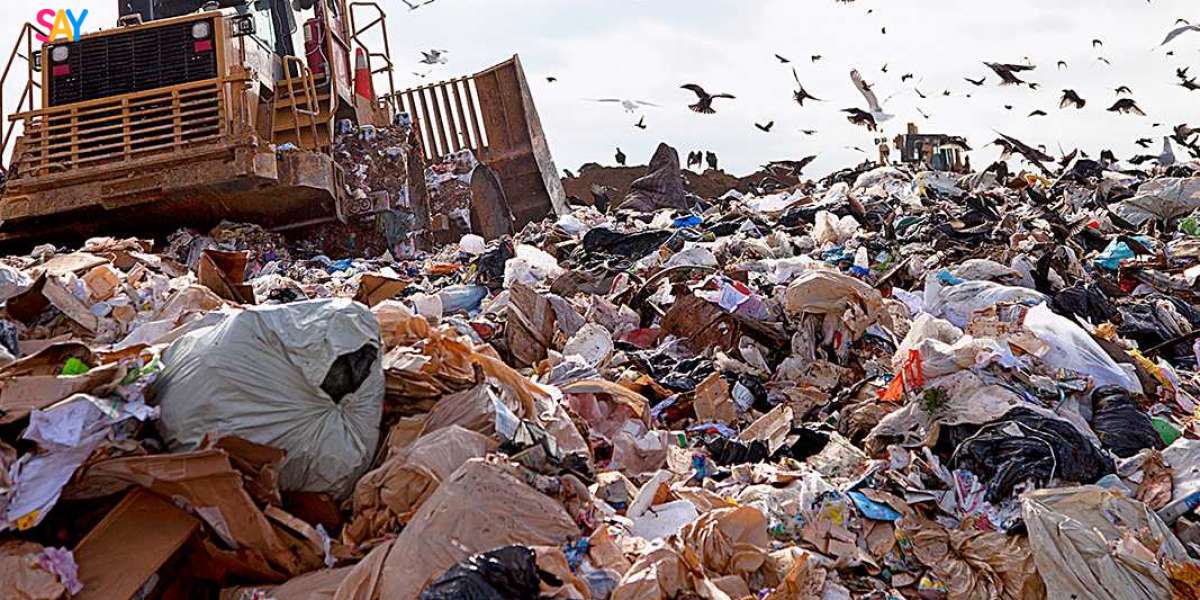Waste disposal is a critical component of modern society, ensuring that waste materials are managed in a manner that minimizes their impact on the environment and public health. Proper waste disposal not only helps in maintaining cleanliness but also plays a significant role in resource conservation and pollution reduction. With the increasing amount of waste generated globally, effective waste management has become more crucial than ever. This article will explore various waste disposal methods, the challenges faced, and the benefits of proper waste management.
Understanding Waste Disposal
Waste disposal refers to the process of handling, managing, and disposing of waste materials generated by human activities. Waste can be categorized into different types, including municipal, industrial, hazardous, biomedical, and electronic waste. Each type of waste requires specific disposal methods to ensure safe and environmentally friendly management. Proper waste disposal helps in reducing pollution, conserving natural resources, and protecting public health. It involves various stages such as collection, transportation, treatment, and final disposal, each playing a vital role in the overall waste management process.
Common Waste Disposal Methods
Landfills
Landfills are the most common method of waste disposal, where waste is buried in designated areas. The process involves layering waste and covering it with soil to prevent odor, pests, and other environmental hazards. While landfills are cost-effective and can handle large volumes of waste, they have significant drawbacks, including land consumption, methane emissions, and potential groundwater contamination. Properly managed landfills with modern technologies can mitigate some of these issues, but they remain a controversial solution due to their environmental impact.
Incineration
Incineration involves burning waste at high temperatures to reduce its volume and produce energy. This method is effective for disposing of hazardous and medical waste, as it destroys harmful pathogens and chemicals. However, incineration has its drawbacks, such as air pollution from the release of toxic gases and ash disposal challenges. Advanced incineration technologies with emission control systems can minimize environmental impact, but concerns about air quality and health risks persist.
Recycling
Recycling is the process of converting waste materials into new products, thereby conserving natural resources and reducing the need for landfills and incineration. Commonly recycled materials include paper, plastic, glass, and metals. Recycling offers numerous benefits, such as energy savings, reduced greenhouse gas emissions, and decreased pollution. However, challenges like contamination, market fluctuations, and public participation can hinder recycling efforts. Effective recycling programs require proper sorting, education, and infrastructure to succeed.
Composting
Composting is a natural process of decomposing organic waste, such as food scraps and yard waste, into nutrient-rich soil. This method is environmentally friendly and helps reduce the volume of waste sent to landfills and incinerators. Composting can be done at home or on a larger scale in municipal composting facilities. The resulting compost can be used to enrich soil in gardens, farms, and landscaping projects. Despite its benefits, composting requires proper management to avoid issues like odor and pests.
Waste-to-Energy (WTE)
Waste-to-Energy (WTE) technology involves converting waste materials into energy, such as electricity and heat, through processes like incineration, gasification, and anaerobic digestion. WTE provides a dual benefit of waste reduction and energy production, making it an attractive option for waste management. However, the environmental impact of emissions and the high cost of advanced WTE facilities are significant concerns. With proper emission controls and efficient technologies, WTE can be a sustainable waste disposal method.
Modern Waste Disposal Technologies
Anaerobic Digestion
Anaerobic digestion is a process where microorganisms break down organic waste in the absence of oxygen, producing biogas and nutrient-rich digestate. This technology is used for treating agricultural waste, food waste, and sewage sludge. The biogas produced can be used as a renewable energy source, while the digestate can be applied as fertilizer. Anaerobic digestion reduces greenhouse gas emissions and provides a sustainable waste management solution. However, it requires careful management and investment in infrastructure.
Pyrolysis and Gasification
Pyrolysis and gasification are advanced thermal processes that convert organic waste into synthetic gas (syngas) and other valuable byproducts through high-temperature treatment. These technologies offer an alternative to traditional incineration, with lower emissions and higher energy efficiency. Pyrolysis involves heating waste in the absence of oxygen, while gasification occurs with limited oxygen. Both processes can handle various waste types, including plastic and biomass. Despite their potential, these technologies require significant investment and technical expertise.
Plasma Arc Gasification
Plasma arc gasification uses a high-temperature plasma torch to convert waste into syngas and vitrified slag. This process can handle a wide range of waste materials, including hazardous and non-recyclable waste. Plasma arc gasification produces minimal emissions and generates useful byproducts, making it an environmentally friendly waste disposal method. However, the high cost of plasma technology and operational challenges limit its widespread adoption. Continued research and development are needed to make this technology more accessible and efficient.
Challenges in Waste Disposal
The growing volume of waste poses significant challenges for Waste disposal systems worldwide. Managing hazardous waste, such as electronic and biomedical waste, requires specialized treatment to prevent environmental and health risks. Environmental impacts, including pollution and resource depletion, are major concerns. Additionally, the high cost of waste management infrastructure and limited public awareness and participation hinder effective waste disposal. Addressing these challenges requires coordinated efforts from governments, industries, and communities to implement sustainable waste management practices.




